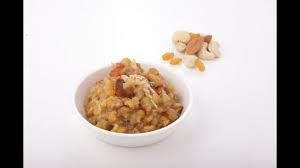Chana dal, or split
Bengal gram, originates from India and is a widely used pulse in Indian
cuisine. It is derived from chickpeas, which have a broader and more diverse
origin story. Research suggests that chickpeas may have originated in Southwest
Asia, particularly in regions like present-day southeastern Turkey and Syria.
Origin of the Chickpea
While chana dal is closely
associated with India, the chickpeas it comes from are believed to have
originated in Southwest Asia. Archaeological and botanical studies suggest
their domestication may have begun in areas like southeastern Turkey and Syria.
Chana Dal in India
India is one of the largest
producers of chickpeas. Chana dal is made by splitting and removing the outer
skin of desi chickpeas, a variety that is smaller, darker, and more robust in
flavor compared to Kabuli chickpeas.
Types of Chickpeas
There are two main types of
chickpeas:
Desi Chickpeas (Bengal Gram):
Small, dark, and rough-coated; primarily grown in India and used to make chana
dal.
Kabuli Chickpeas (Safed Chana):
Larger, lighter in color, and commonly grown in the Mediterranean, Northern
Africa, and Afghanistan.
Chana dal is made specifically
from desi chickpeas, which are hulled and split, resulting in a smaller,
sweeter, and more digestible pulse. Despite its deep ties to Indian cuisine,
desi chickpeas are also cultivated in parts of the Middle East.
Production in India
India produces around 80–90 lakh
tonnes of chana annually, with major production states including Madhya Pradesh,
Rajasthan, Maharashtra, Karnataka, and Uttar Pradesh. These regions contribute
approximately 87% of the total national output.
Bengal Gram in South Indian
Cuisine
Though chickpeas trace their
origins to Western Asia, Bengal gram (chana dal) has become an essential staple
across the Indian subcontinent, especially in South India. Its widespread use
is likely due to its nutritional value, versatility, and local cultivation,
rather than any specific historical trade route.
Versatility in Cooking
Bengal gram is a key ingredient in
a variety of South Indian preparations, including:
Curries and dals
Snacks like vadas (deep-fried
lentil doughnuts)
Lentil-based powders and chutneys
Nutritional Value
It is rich in protein, complex
carbohydrates, vitamins, and minerals, making it a valuable component of a
balanced vegetarian diet.
Regional Adaptations
The preparation of Bengal gram
differs across South Indian states:
In Kerala, it may feature
prominently in lentil curries.
In Tamil Nadu, it is used in sambar,
a staple lentil-based stew.
In Karnataka, it forms the base of
both sweet and savory dishes.
Natural Integration
Unlike spices or other ingredients
introduced via colonial or maritime trade, Bengal gram has become a
staple through local agricultural use and natural culinary evolution.
Culinary Uses: Sweet and Savory
Bengal gram is used in various
forms—whole, split, roasted, or ground into flour—adding depth and texture to
both sweet and savory dishes.
Sweets
Hyagreeva: A traditional Karnataka
dessert made with chana dal, jaggery, milk, and nuts.
Mysore Pak: A renowned South
Indian sweet made using gram flour, ghee, and sugar, famous for its rich,
melt-in-the-mouth texture.
Savories
Murukku: A popular snack often
made with a mix of rice flour and urad dal flour, and sometimes includes Bengal
gram flour for added crispness.
Pottukadalai: In Tamil Nadu,
roasted Bengal gram (chutney dal) is used in powdered form in various snacks
and also eaten with jaggery as a nutritious snack.
Chola Bhaja: In West Bengal, this
crispy roasted gram snack is paired with puffed rice and mustard oil as a
street food favorite.
Chana Dal Curries: Bengal gram is
a core ingredient in numerous dal-based dishes across the Indian subcontinent.
Conclusion
Bengal gram (chana dal) plays an
integral role in Indian cuisine, especially in the South, due to its
adaptability, nutritional richness, and deep cultural integration. While its
ancestral roots may lie in Southwest Asia, its culinary heart beats strongly in
Indian kitchens—evident in the variety of dishes it enriches, from humble dals
to festive sweets.




No comments:
Post a Comment